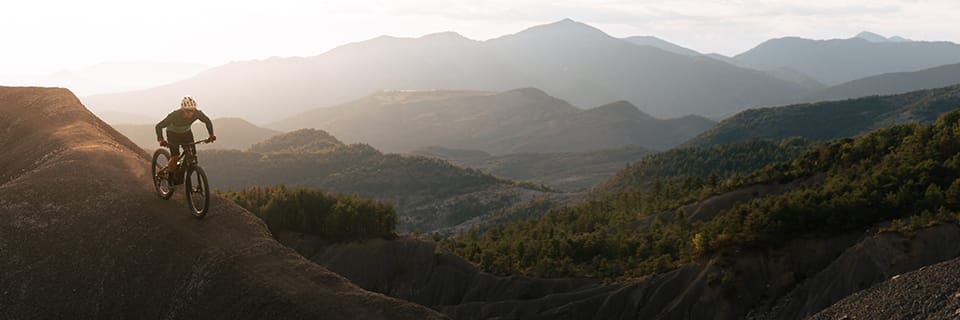Although they can't prevent all injuries, protectors can prevent a lot of damage! Today's technologies make them increasingly comfortable, lightweight and compatible with long outings.
CHARACTERISTICS
- Types of protection :
- Upper body : vests, back protectors, elbow pads, neck protectors, wrist protectors
- Lower body : shorts / undershorts, knee pads, shin guards, ankle guards
- Materials: intelligent foams, i.e. memory foam, rigid shells, with or without sleeve
- Type of tightening / adjustment : velcro, clips, elastic, micrometric
ALL YOU NEED TO KNOW ABOUT MOUNTAIN BIKE PROTECTORS
TYPES OF PROTECTORS
Upper body
Dedicated to the most committed disciplines, the vest provides comprehensive protection. It often incorporates a mix of foam and rigid protection, to cover the back, shoulders, elbows and forearms, chest and abdominal area.
Some models make exclusive use of intelligent materials that harden on impact. The protective elements are linked by a light, airy mesh fabric. A real suit of armor, adjustable at strategic points!
Some vests are elbow pads-free or even sleeveless, either to offer the choice of wearing elbow pads, or to suit a "wiser" riding style.
- Dorsal
A lighter version of the protective vest, the dorsal protects only the spine, leaving the rider free to choose protection for the rest of the upper body. They can be attached via shoulder straps and a wide abdominal belt, or integrated directly into a zipped jacket. Back protectors are also sometimes integrated directly into a backpack.
Today's elbow pads come in a wide range of designs. From the most reinforced models, with possible forearm protection, to light, flexible "sleeve" models, every rider can find his or her ideal protection.
- Cervical protection
An articulated neck support or "neckbrace", designed for example in fiberglass, protects against the notorious "whiplash" without interfering with a full-face helmet. Specific to the most extreme riding practices!
- Wrist guards
These protective elements limit the consequences of direct impacts on a highly exposed joint when cycling, or provide support for fragile wrists.
Lower body
A pair of shorts fitted with soft protectors provides a first line of defence against impacts. Abrasion-resistant fabric reduces the risk of skin burns.
The undershorts are the body-built version of the famous cycling shorts! It features various reinforcements held firmly in place, particularly on the outer thighs. This area is very exposed in the event of a fall, and without protection, bruises form easily, even at low speeds.
Knee pads are now available to all cyclists, especially with the advent of lightweight, ventilated models that don't hinder pedaling.
MTB knee pads come in many forms: soft or reinforced with a rigid shell, they can cover the knee only, or protect the shin at the same time. Some cover the whole leg and can be slipped on like pants, while others only cover the front and sides.
To enhance comfort and eliminate chafing, some manufacturers offer under-knee protectors that take the form of sleeves to be slipped on before the protection.
- Shin guards
Shins are often the casualties of pedal kickbacks. Shin guards save a lot of stitches! Some models take the form of a sock, with integrated protection, thus fulfilling a dual function.
- Ankle guards
Ankles can be exposed to violent pedal returns or unfortunate encounters with rocks. Ankle guards protect these sometimes fragile bones!
MATERIALS
In recent years, mountain bike protectors have undergone significant evolution, thanks to the arrival of so-called "intelligent" materials, such as D3O, SAS-TEC or 3DF (registered trademarks). These cushions harden in response to impact. They absorb and dissipate the shockwave, before quickly returning to their normal state. As a result, the protectors become softer, more comfortable and lighter, while still fulfilling their role perfectly.
Discover our technologies
Rigid shells are not forgotten either. Manufacturers make maximum use of breathable technical materials to limit the formation of perspiration. Soft fabrics and flat seams are preferred to avoid irritation. Anti-bacterial and anti-odour treatments are sometimes incorporated.
TYPE OF TIGHTENING / FIT
Protectors can be adjusted and closed using Velcro, clips, elastic or a combination of several techniques. Micrometric buckles are rare, but do exist on some models.
Knee or elbow pads that completely encircle the limb can be slipped on (sleeve), but can also be closed on the side via a zip. Convenient so you don't have to remove your shoes. Silicone reliefs often ensure a secure fit.
In all cases, it's essential to follow the manufacturer's recommendations for choosing the right size. A few simple self-measurements will ensure a perfect fit, neither too tight (uncomfortable) nor too loose (less effective, if at all).
WHAT PROTECTION IS RIGHT FOR ME?
Shape, type of protection (rigid or flexible), fit. Each rider can adapt his choice to his own riding style:
Hiking
Hikers can choose lightweight, breathable knee and elbow pads that are compatible with pedaling. They look like sleeves, and their elasticity makes for a precise, comfortable fit.
Cross-Country
In the Olympic Cross-Country format, no rider wears protection other than gloves and helmet.
In the Raid and Marathon mountain formats, on the other hand, some riders opt for a more cautious approach and carry lightweight knee pads, which can be worn like a second skin to protect against abrasion or light shocks in the event of a fall.
All-Mountain
Wrap-around kneepads, elbow pads and even back protectors are ideal for long, technical mountain outings!
The latest technologies offer the All-Mountain rider the choice of flexible, highly effective protection, easy to slip under clothing. On the practical side, the back protector can be integrated into a rucksack. This allows you to "free" your back with a single gesture when taking a break.
Finally, some riders get into the habit of loosening their knee pads before tackling long climbs: in this case, be sure to choose a tightening system that's easy to manipulate with one hand, such as Velcro straps.
Enduro
Here, protection comes first. Knee pads, elbow pads and a back protector, or a full back vest, can help to prevent high-speed falls, which are common in this discipline.
A mix of rigid and variable-density foam protectors can be chosen. However, comfort and breathability must not be neglected: you don't want to suffocate during leg-powered connections, and you need to retain good freedom of movement to feel your ride.
Last but not least, accessories such as ankle protectors can save you a lot of unnecessary pain!
DH / Freeeride
No compromises in DH/Freeride: extreme slopes, jumps and speed leave little room for error. In the event of a fall, protective gear is a last chance against injury, and sometimes makes all the difference. Rigid kneepads with shin guards, a full back vest, undershorts and possibly a neck support are recommended.
Equipped in this way, the rider can quickly become hot, but that's an advantage when the breeze is blowing on the ski lifts!
Découvrez tous nos conseils & Tutoriels
EQUIPMENT - Protection Gear
-
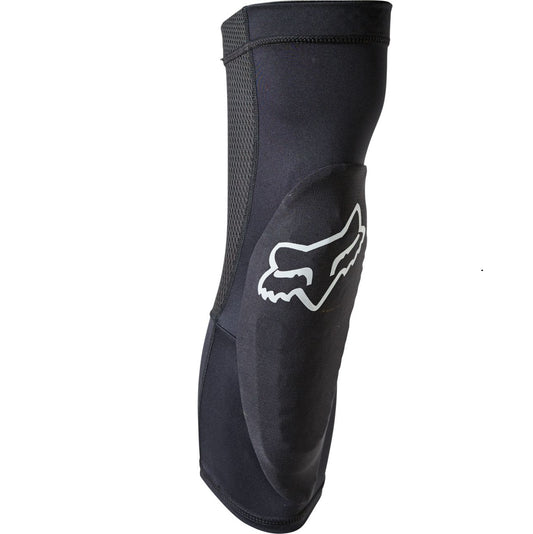
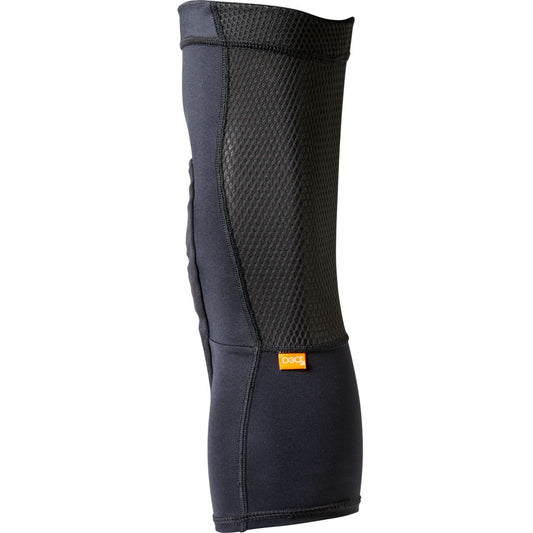
FOX ENDURO D3O Knee Pads Black 2025
Regular price From 64,99 €Regular priceUnit price per -
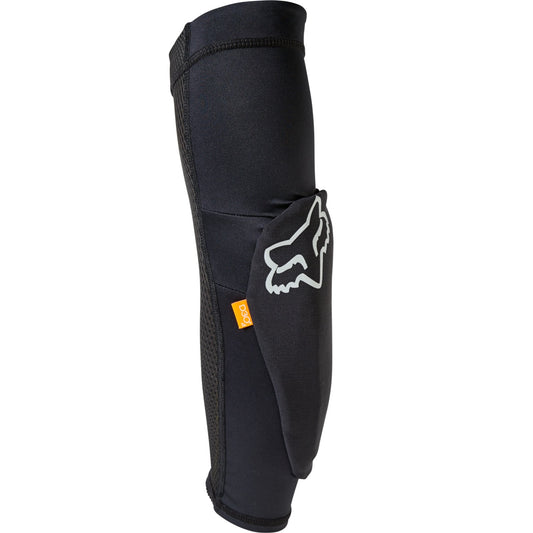

FOX ENDURO Elbow Pads Black 2025
Regular price 62,99 €Regular priceUnit price per -

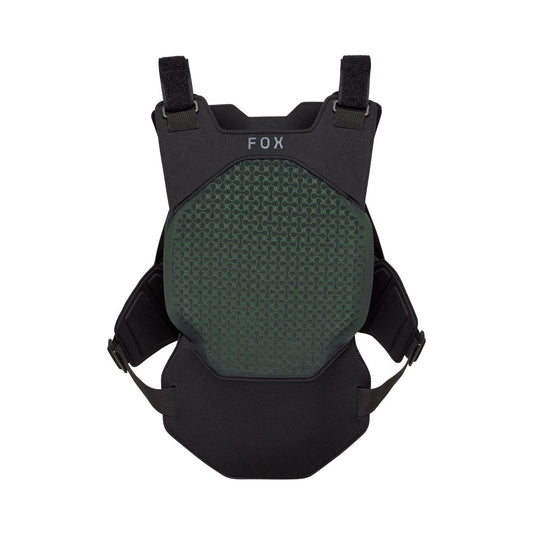
FOX AIRFRAME Protective Bib Black
Regular price 149,90 €Regular priceUnit price per -
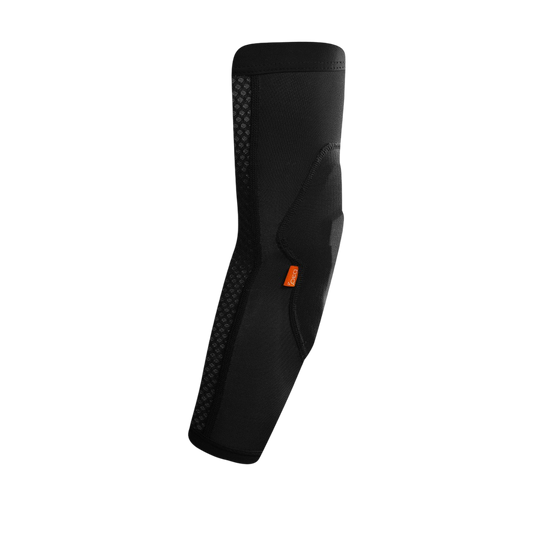
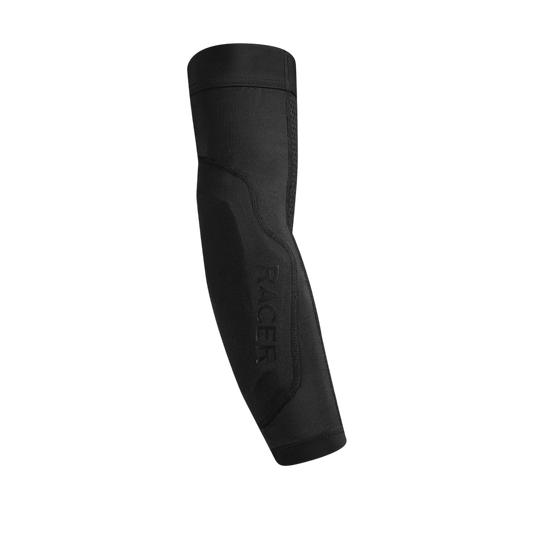
RACER MOTION 2 elbow pads Black
Regular price 69,99 €Regular priceUnit price per -
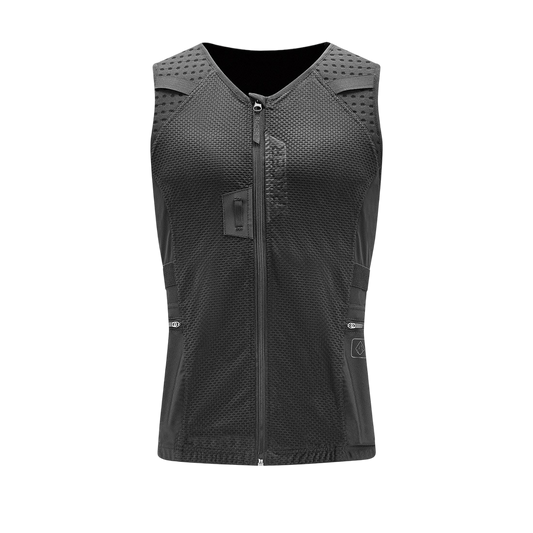
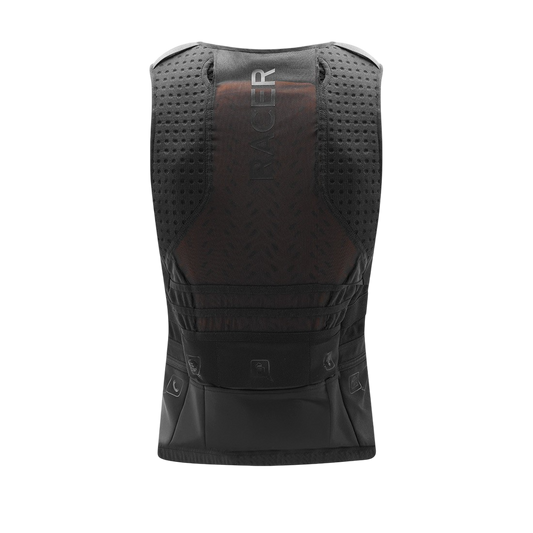
RACER WILD Sleeveless Protective Jacket Black
Regular price 119,90 €Regular priceUnit price per -
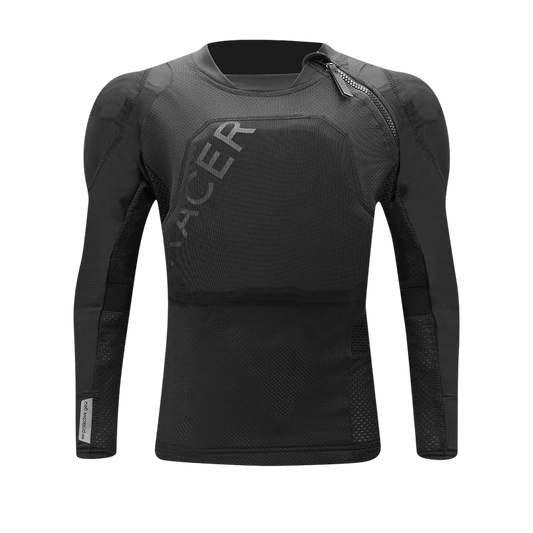
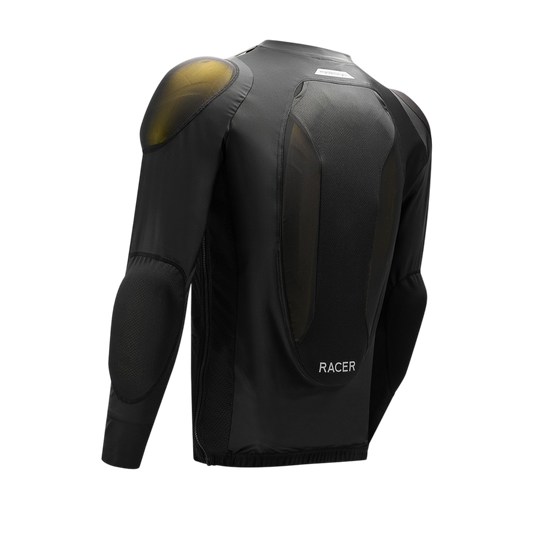
RACER MOTION Protective Jacket Black
Regular price 149,90 €Regular priceUnit price per -
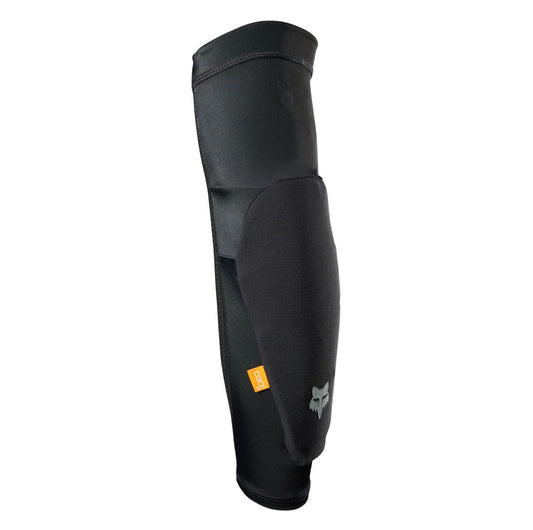
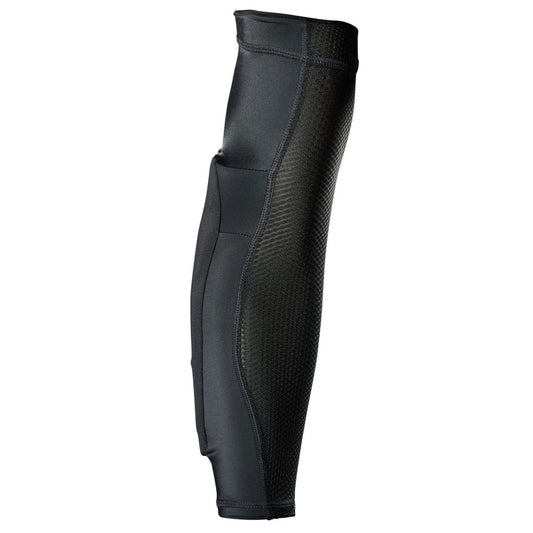
FOX ENDURO ELBOW SLEEVE Elbow Pads Black AH 2025
Regular price 64,99 €Regular priceUnit price per -
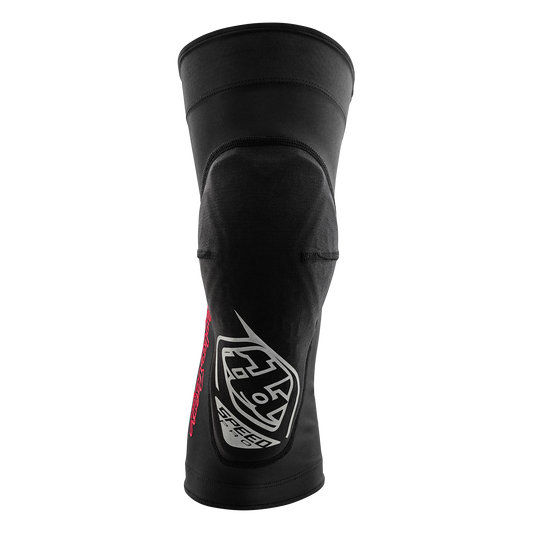
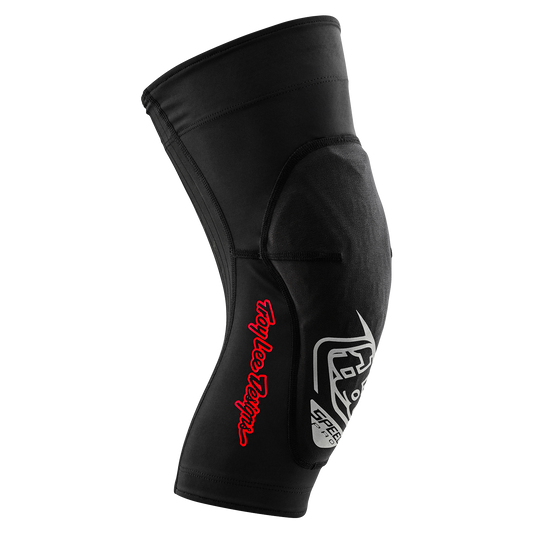
TROY LEE DESIGNS SPEED PRO Knee Pads Black 2025
Regular price 79,99 €Regular priceUnit price per
